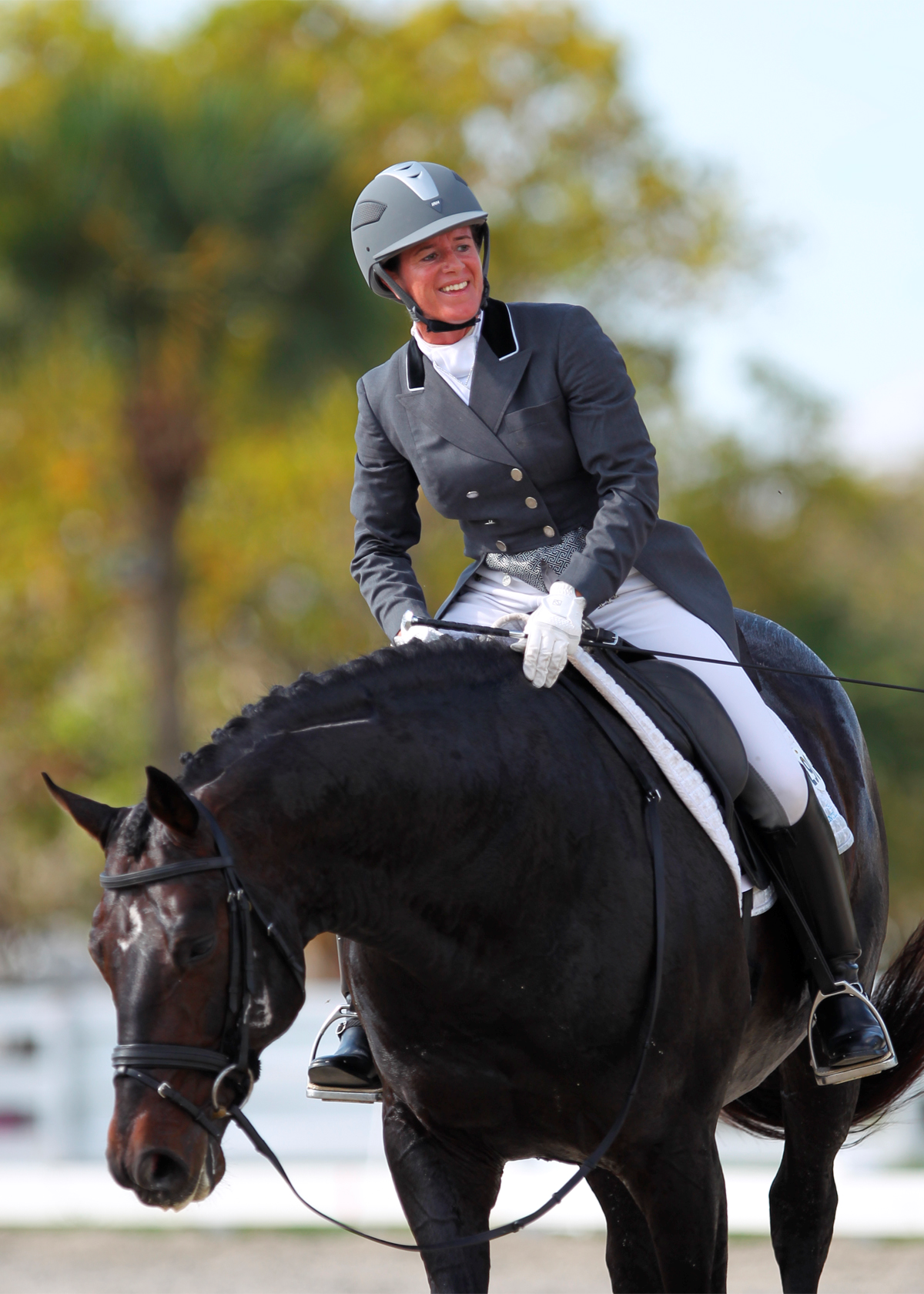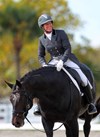Q: When collecting the canter, does your seat stay quiet? Do you keep the energy with only your legs or do you ride the canter with your seat? —Name withheld by request
A: There is a little bit of worth in both of these options but neither is quite right. In the collected canter the horse’s stride becomes shorter but the activity remains the same. The rider’s seat is important in regulating the size of the stride. Therefore, it must become more quiet and still to communicate to the horse that he must decrease the length of his stride. Even so, the seat remains a driving aid. Many riders describe the feeling of driving in the collected canter as “bouncing the horse” because the energy that produced the length of the stride now creates the height of the stride.

The rider’s legs alone cannot be responsible for maintaining the energy. A prerequisite of collection is the rhythm and energy that will not dissipate with half halts. If the horse is not truly in front of the leg, he will feel trapped between the aids. This creates tension, which can result in a loss of rhythm, a short neck, crookedness, falling out of the canter and a number of other faults.
One of my favorite quotes of all times comes from renowned trainer Conrad Schumacher. He says, “The rider takes the motion of the horse and gives it back.” This kind of driving seat allows your horse’s back to work because the circle of aids is complete. You never mention anything about the hand. In collecting the canter, the hands that normally follow remain fixed while the seat and the leg push toward the hand. This is not a pulling hand.
Another important factor in using the seat and leg properly while applying collecting aids is the rider’s position. Many people fall into the trap of leaning back, often allowing the legs to slide forward as well. This position works against the motion of the horse, which usually causes him to hollow his back and lose energy behind. This can create an ineffective cycle of overdriving and holding the horse back. Instead, the rider should focus on keeping the leg balanced underneath her seat. Her upper body should remain tall and perpendicular to the horse’s spine. A rider who is strong but supple in her position starts off with what I call a “built-in half halt.” When she is in balance, her horse feels and can respond to half halts. In contrast, it is impossible for a horse to feel the half halt of a rider who is continually against the motion. It’s like trying to drive your car down the road with the parking brake engaged.
Encourage your horse and yourself to keep the quality of the canter by using appropriate exercises. When your horse is beginning collection, simply making the circle slightly smaller or riding a slight shoulder-fore may be enough. Teach him that when the work becomes a little harder, he must keep his activity and alignment. Concentrate on your position and the clarity of your aids. As your horse becomes more comfortable with compressing his stride, you can use increasingly difficult exercises such as counter canter, half passes and working pirouettes. The focus should always remain on the quality of his canter and balance. Never proceed with the exercise when quality diminishes because it can ruin a horse’s confidence. These exercises can also be helpful for a green rider on a trained horse.

Jennifer Baumert is a USDF bronze, silver and gold medalist and a USDF certified instructor through Fourth Level. She is a popular instructor and clinician.











